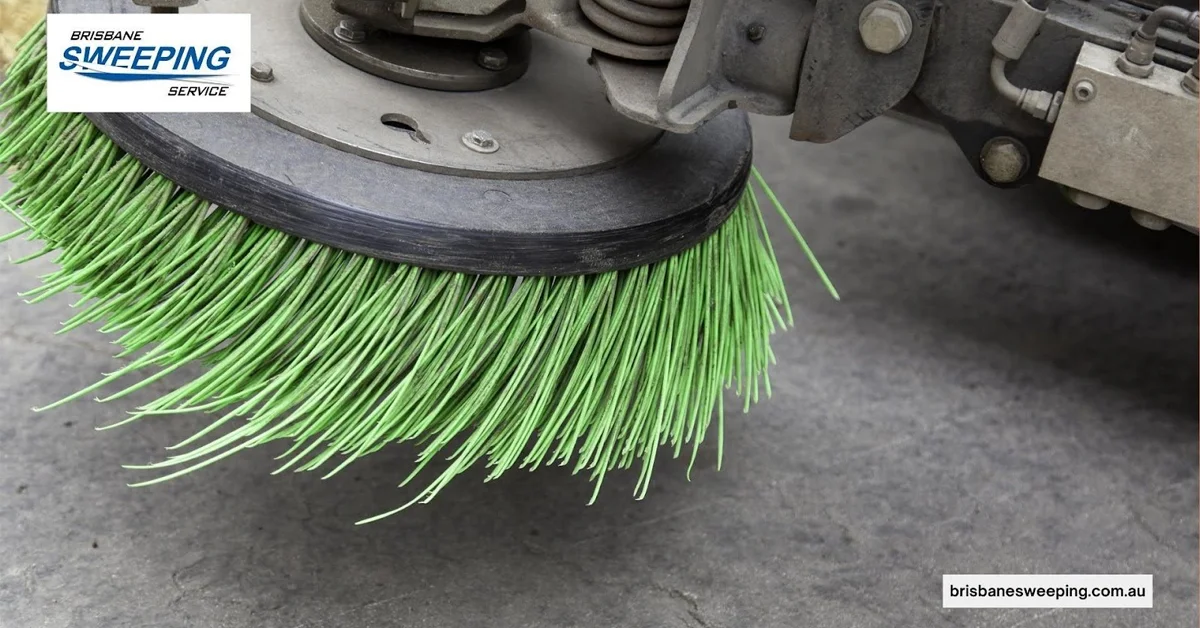If you’re in charge of an industrial site, you already know what happens when it rains. Everything on the ground starts moving. Dust, oil residue, metal fragments, packaging scraps and whatever else is sitting on your surfaces gets washed straight into the drains. That polluted runoff flows into Stormwater Pollution systems and eventually ends up in local waterways, often without any treatment. It creates environmental damage, puts your site at risk of non-compliance and can lead to fines or shutdowns.
Environmental sweeping solves this before it becomes a bigger issue. It clears away contaminants before the next storm has the chance to move them off your site.
Services like Brisbane Sweeping make it simple to build sweeping into your regular maintenance routine so your site stays clean, audit-ready and environmentally responsible.
In this article, we’ll show you how a consistent sweeping plan supports stormwater protection and strengthens your overall compliance strategy.
Why Stormwater Pollution Hits Industrial Sites Hard

What happens when rain hits your site?
When it rains, water races across concrete and asphalt, picking up whatever’s on the surface: dust, bits of rubbish, oil stains, even leftover chemicals. On industrial sites, there’s a lot more for that water to collect. With equipment, vehicles and storage areas all exposed, the runoff becomes a polluted mix that flows straight into the stormwater system.
Many managers only notice this after a spill, a failed inspection or a compliance fine.
According to the EPA NSW, non-point source pollution is one of the biggest threats to urban waterways. It builds up through daily operations.
Even if your site doesn’t discharge liquids directly, it may still contribute to environmental damage. Particles from metals, plastics, and cleaning agents all get caught in runoff.
So, it’s clear that industrial surfaces contain higher environmental risks. That’s why these zones receive more attention from regulators.
Environmental sweeping gives you control in this case. With a proper cleaning schedule, you prevent pollution before it starts and reduce the need for expensive remediation.
How Sweeping Stops Runoff Before It Starts

Environmental sweeping tackles the pollutants that regular cleaning usually misses. It removes fine particles that would otherwise enter drains and cause environmental harm.
Once rain starts, any dust or debris left on your site becomes part of the stormwater system. That’s why you need to get on top of things BEFORE it rains. Sweeping can help because it stops that pollution before it spreads.
Here’s what it helps manage:
- Fine sediment from vehicle tyres and material stockpiles
- Oil and fluid residue from machinery and heavy equipment
- Packaging scraps and broken material around loading areas
- Metal dust from manufacturing or cutting activities
Different sweepers handle different conditions:
- Mechanical sweepers are best for heavy debris
- Regenerative air systems and vacuum sweepers are ideal for fine dust and uneven surfaces
Sweeping also keeps your drainage infrastructure clear, lowering the risk of flooding or damage.
A Minnesota Pollution Control Agency study reported pollutant loads dropped by up to 90% with regular sweeping.
Brisbane Sweeping applies these techniques across a wide range of industrial sites and keeps detailed records of each sweep to support compliance reporting and future audits. In the next section, we’ll explain why that kind of documentation matters and how it can make a real difference during inspections.
Turning Sweeping into a Compliance Strategy
So, why do we take the time to record every sweeping activity? Because a clean surface might look good, but it won’t protect you in an audit. What proves compliance is your records.
A well-maintained site shows professionalism, but it also shows regulators that you’re serious about managing your environmental responsibilities.
Regulatory bodies want to see how your site handles everyday runoff from vehicles, stockpiles and open yard areas. That’s why environmental sweeping is considered a Best Management Practice (BMP) and why it deserves a place in your compliance strategy.
If your Stormwater Pollution Prevention Plan (SWPPP) doesn’t mention sweeping, it’s time to add it in. Also, it needs to be part of your routine and your recordkeeping.
Here’s an easy way to start:
- Log each sweep by date and location
- Note weather conditions and any visible debris
- Keep records ready for audits or inspections

Many sites sweep regularly but fail to document the activity. That limits your ability to prove compliance.
Brisbane Sweeping makes this easy for you by providing clear reporting that matches audit standards.
Pro Tip: Maintaining a clean site gives regulators fewer concerns and helps your business show a clear commitment to responsible site management.
Dust and Debris – The Hidden and Obvious Pollutants
Pollution on industrial sites comes in multiple forms.
Large debris like broken pallets, leaves, and packaging waste is easy to spot. What’s harder to see is the dust that settles across surfaces every day. These fine particles often escape attention but can be just as harmful when washed into stormwater systems.
Environmental sweeping tackles both. Sweepers collect solid waste before wind or rain moves it, while also removing dust and residue that build up from machinery, storage and daily movement.
Here’s why this matters:
- Dust pollution doesn’t stay put. It becomes airborne or flows into drains with the next rain.
- Debris runoff clogs drainage and increases the chance of overflows.
- Both issues raise environmental and safety risks.
Research from NIH’s Environmental Health Perspectives shows that fine industrial dust can travel up to 40 kilometres, affecting ecosystems far beyond your fence line.
The Business Case for Sweeping

In some industrial precincts, businesses are teaming up to share sweeping services across multiple sites. It’s a smart move that reduces individual costs while lifting environmental standards for the entire area. By working together, operators not only keep their sites cleaner but also improve audit outcomes and reduce the likelihood of drainage issues across shared infrastructure.
If you’re weighing the value of a sweeping program, here’s what you’re really getting:
- Lower risk of non-compliance and penalties
- Fewer drainage blockages and maintenance issues
- A stronger reputation with regulators and customers
Don’t Let the Next Storm Catch You Out
Stormwater pollution builds up fast, especially on industrial sites. But with the right sweeping plan, you can stay ahead of the problem and reduce the risk of fines, environmental damage and operational setbacks.
Start with small steps. Review your site’s surfaces, look at your current cleaning schedule and take note of what’s left behind after a busy day.
If you’re confused about where to begin or want a more consistent approach, visit Brisbane Sweeping to see how scheduled sweeping can help your site stay clean and compliant.











